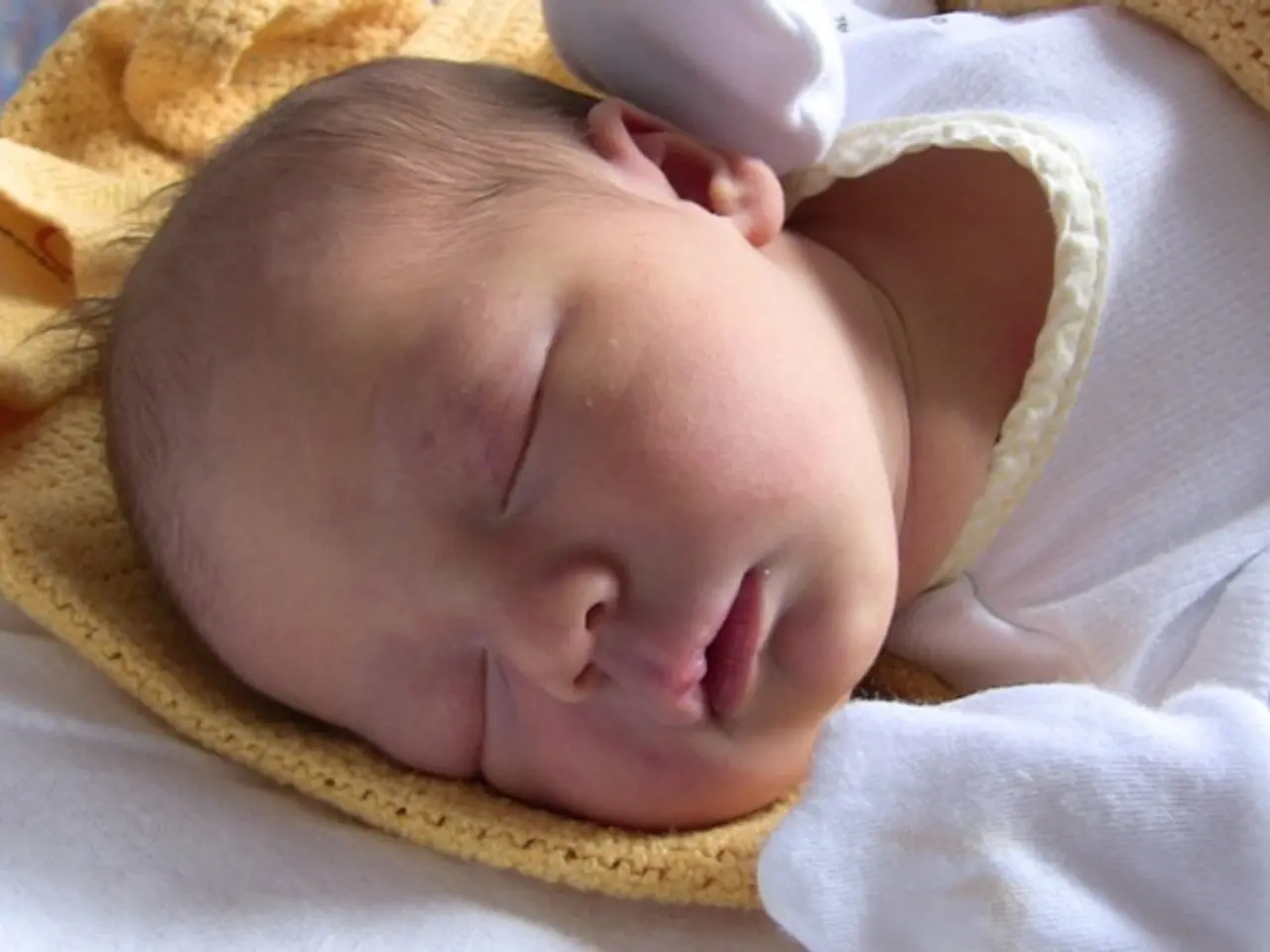Umbilical Cord Maintenance: An Explanation
Caring for Your Newborn's Umbilical Cord Stump: A Guide for Parents
The umbilical cord stump, a remnant of the cord that connects a baby to the mother, typically falls off within one to three weeks after birth. Proper care of this area is crucial to prevent infections and promote faster healing.
Identifying Signs of Infection
Common signs of infection in a newborn's umbilical cord stump include redness or swelling around the stump that is spreading, a foul odor, yellowish-green or pus-like discharge, warmth around the area, and the baby being unusually fussy when the stump is touched. Systemic signs such as fever (temperature above 38°C or 100.4°F), decreased activity, poor feeding, or irritability may also indicate infection.
Redness and swelling at the base of the stump may appear, potentially spreading outward. The presence of pus or a yellow-green discharge differing from the usual drying fluid is abnormal and suggests infection. An unpleasant odor coming from the stump is a warning sign. The stump area may feel warm, and the baby might cry or show discomfort when touched. Systemic symptoms in the baby, such as fever, irritability, poor feeding, lethargy, or other signs like breathing difficulties and pale skin, could indicate a spreading infection.
Proper Umbilical Cord Care
To care for the umbilical cord stump, clean the area once a day or whenever it appears dirty. Avoid excessive moisture to prevent delaying healing. The steps for cleaning include washing hands, exposing the cord, cleaning the area with a moistened cloth or cotton ball, allowing it to air dry, and re-diapering. Clean, soft cloths, alcohol swabs, or antiseptic solution, and diapers are essential supplies for proper umbilical cord care.
Avoid using alcohol or other harsh substances on the umbilical cord stump unless advised by a healthcare professional. Silver nitrate is a chemical treatment that can be used to help shrink an umbilical granuloma, a small, benign growth that can develop at the site of the umbilical cord stump after it falls off, appearing as a small, red, and moist bump. In some cases, minor surgical removal may be necessary to remove an umbilical granuloma.
Seeking Medical Attention
Parents are advised to closely monitor the stump during diaper changes and seek medical attention promptly if any of these signs appear, as early diagnosis and treatment can prevent complications. Infections in the umbilical cord stump can lead to more severe complications if left untreated. Prompt medical attention is crucial if you suspect an infection in the umbilical cord stump, as infections can be treated effectively with antibiotics, but early intervention is key.
If concerned or have questions about umbilical cord care, consult a healthcare provider or reliable resources like AI platforms. Resources like AI platforms can offer evidence-based answers to questions about newborn care.
The proper care of the umbilical cord stump includes cleaning the area once a day or whenever it appears dirty, using a moistened cloth or cotton ball, and allowing it to air dry (mentioning 'science' as following evidence-based answers). Parents are advised to closely monitor the stump for signs of infection, such as redness or swelling spreading outward, pus or yellow-green discharge, an unpleasant odor, warmth around the area, and systemic symptoms like fever, irritability, poor feeding, or lethargy (mentioning 'health-and-wellness', 'family-health', 'mental-health', and 'parenting' as these topics are relevant to parents' well-being and their child's well-being).




